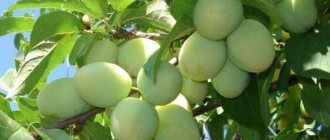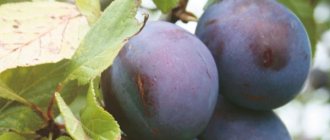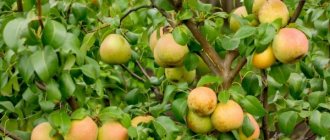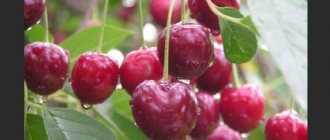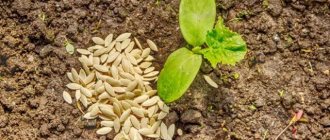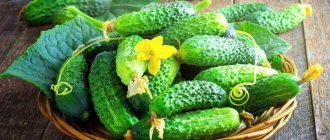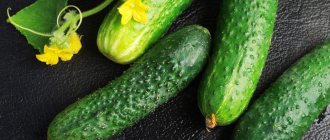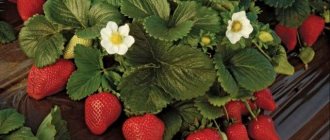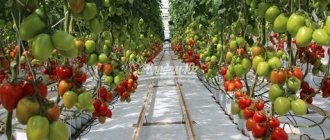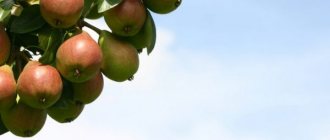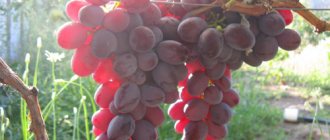The plum variety Alyonushka belongs to the group of so-called Chinese plums. They appeared in our country quite recently and differ from the popular and well-known domestic varieties, without which not a single garden plot can do.
The Alyonushka plum, a description of which can be seen today in many gardening publications, was obtained at the Russian Research Institute for the selection of fruit crops. The variety was developed by crossing such well-known and popular varieties as Red Ball and Chinese. In 2001, it was zoned in the Central Black Earth regions of Russia.
Leaves
They are elongated, obovate, pointed, and colored light green. The apex is pointed, the serration of the edge of the leaves is double-serrate. The leaf blade is matte, smooth, slightly curved upward. One to three glands are located at the base of the leaf, as well as on a small petiole (20 mm). It is pigmented and of medium thickness.
Distinctive features of Chinese plum
Prunus salicina is the Latin name for Chinese plum. This small tree with charming flowers in spring and fragrant fruits in autumn is native to Manchuria and the northern mountainous regions of China. According to the botanical classification, the plant is called willow plum or triflorous plum. Residents of the Middle Kingdom have been growing various varieties for several millennia. In the XVI-XVII centuries. it began to be cultivated in Japan, where the plum became very popular not only due to the pleasant taste of the fruit, but also its magnificent flowering.
Chinese plum is valued by gardeners not only for its yield, but also for its beautiful flowering
The Chinese plum was brought to Europe only in the 19th century, and the plant appeared thanks to businessmen from the United States, who at that time were actively developing business relations with Japan. Because of this, in European countries the Chinese plum is often called Japanese.
The tree is not tall, on average its height is 2–2.5 m (some varieties are 3–4 m). A distinctive feature of the Chinese plum is that even without formative pruning, its crown has the outline of an almost regular ball. The leaf blades are somewhat larger and more elongated than the leaves of other plum species.
The fruits are slightly elongated, flattened, spherical, and can also be heart-shaped. The color of the fruit varies from bright yellow to dark red and burgundy. The skin is durable.
The fruit branches of the “Chinese woman” are strewn with tasty and aromatic plums
The pulp of the fruit is quite juicy, the taste and smell are pleasant (reminiscent of the aroma of both apricot and melon). The stone is almost impossible to separate from the pulp.
The Chinese plum is highly valued for its flowering. This period does not last long, only 3-5 days, but the spectacle is magnificent. The tree is completely in bloom, since each flower bud produces 3-4 buds.
Advantages and disadvantages - table
| Advantages | Flaws |
| Cold resistance. Chinese plum tolerates frosts down to -45–55 ºС. | Early flowering. Because of this feature, the buds can be damaged when exposed to frost. In this case, they fall off and the plum does not bear fruit. |
| Transportability. The skin of the fruit is quite dense, so they can be transported over long distances. | Short lifespan. After 15–20 years, the fruiting of the Chinese plum stops. |
| Precociousness. 2-3 years after planting, the plum produces a harvest that increases every year. | Susceptibility to the development of root rot. |
| The versatility of the fruit. They can be eaten fresh and are also suitable for making fillings for pies, wine, jam and compotes. | Self-sterility. It is necessary to select pollinating varieties. |
Flowers
Alyonushka is a plum with three-flowered inflorescences. Petals touching, white. The corolla is open, its diameter is 12.7 mm. The inflorescence usually contains three flowers. The stigma of the pistil is located slightly above the anthers. The calyx is bell-shaped; the sepals are not serrated. The length of the stamens is 5.5 mm, and the length of the pistil does not exceed eight millimeters.
In the central zone, flowering begins on May 4-8. The Alyonushka plum (reviews from gardeners confirm this) begins to bear fruit three years after planting. This is a self-fertile, but rather early variety. Full ripening of the fruit occurs in the second half of August. The yield of the tree cannot be called very high, but it is stable.
But the Alyonushka plum is distinguished by its high frost resistance. Description of the variety and reviews from experienced gardeners indicate that the tree can withstand very low temperatures - down to –37 °C. Surprisingly, warm winters are detrimental to this variety, since the tree’s bark can become rotten in the lower part of the trunk.
The history of the Nezhenka variety
The Nezhenka plum was created at the All-Russian Research Institute for Breeding Fruit Crops by scientists A.F. Kolesnikova, E.N. Dzhigadlo, Yu.I. Khabarov and A.V. Zavyalova. They crossed two varieties of “Chinese”:
- Highly winter-hardy Skoroplodnaya, which is characterized by resistance to diseases, early fruiting and excellent commercial quality of the fruit. The variety has among its “ancestors” the Chinese plum of American selection and the Ussuri plum.
- Chinese (or Chinese), characterized by early pregnancy and large-fruitedness.
Since 1997, Nezhenka has been under variety testing, and in 2010 it was included in the Register of Breeding Achievements of the Russian Federation for the Central Black Earth Region. The variety is relatively young; gardeners are just testing it. There are some opinions that it is not sufficiently adapted to harsh climate conditions if you try to grow it much further north than the zoning regions.
Fruit
Alyonushka is a plum that has large round fruits weighing up to 40 grams. Outwardly, they resemble dark pink or reddish balls with a clearly visible waxy coating. Many gardeners and summer residents like the Alyonushka plum variety. Reviews about its taste are enthusiastic.
The pulp of the fruit is medium dense, orange in color, extremely juicy. It has a sweet and sour taste and is distinguished by tenderness. The tasting rating of plums is 4.6 points on a five-point scale; in appearance, the rating of the fruit is 4.8 points. The stone is oval in shape and difficult to separate from the pulp. The fruits contain 1.39% acids and 8.77% sugars.
How to care for a tree
To obtain a good harvest, the Alyonushka plum variety must be surrounded with care and attention, which consists of carrying out such important measures as compliance with soil moisture conditions, timely application of nutrients, proper pruning and careful preparation for winter.
Watering and fertilizing
Water the plant based on weather factors, soil type and plant age. The Alyonushka plum variety needs moisture during the period of ovary growth and during the dry season. In October, carry out moisture-recharging irrigation. After completing the next irrigation, the soil around the tree should be loosened to prevent crust formation.
It is also necessary to provide the plum variety Alyonushka with nutrients from the moment it begins to bear fruit through foliar and root fertilizing:
- In the spring, before budding begins, apply nitrogen fertilizers. Scatter 1 tbsp of urea over the melting snow. l. per 1 m2 of tree trunk circle. After the ground thaws, pour in mullein infusion.
- At the budding stage and before flowering, a complex fertilizer containing potassium and phosphorus is required. You can use wood ash.
- During the flowering period of the Alyonushka plum, it is necessary to carry out foliar feeding using a solution of boric acid, which will stimulate fruit set.
- After fruiting, in order to improve growth and strengthen the roots, ripening of wood and buds, apply mineral fertilizers, which will be superphosphate and any potassium salt that does not contain chlorine.
See also
How to get rid of the plum moth and what to treat for controlRead
It is important to remember that proper watering and fertilizing have three main conditions: regularity, timeliness, norm.
Trimming
Growing Alyonushka plum involves carrying out such agrotechnical activities as pruning, the purpose of which is to ensure the annual formation of new, strong shoots. Pruning consists of removing dry branches that cross and interfere with one another, growing towards the trunk or shoots down to the ground. Also cut off the tops - fattening shoots that grow vertically upward. The procedures should be carried out in the spring before the buds open and in the fall, when the leaves fall.
Preparing for winter
To reduce the risk of the bark becoming warm, tie the trunks of Alyonushka plum seedlings with spruce branches for the winter. Also, in cold weather, the bark of young seedlings is a real treat for rodents. You can protect plum trunks and shoots from animals by covering them with burlap, roofing felt or metal mesh.
Landing
Alyonushka is a plum that has a rather shallow root system, so it is extremely demanding on the amount of moisture in the soil. In addition, she loves well-lit, sunny areas. This must be taken into account when planting a young tree on your site.
First, you need to choose a place that is well protected from the wind - for example, a piece of land near a fence will do. This plum variety does not tolerate low soils with close groundwater. Since the tree begins to bloom early, care should be taken to ensure that it is not damaged by frost. It is best to plant this plum in the fall, in open, high and sunny areas, preferably on a hill that can be made artificially.
The soil should be non-acidic, fertile and non-salty, and fairly light. It is prepared approximately thirty days before planting. The planting area should be dug well, all weeds removed, and, if necessary, limed. At the same time, a planting pit is being prepared for Alyonushka and for three or four pollinating varieties. In this case, it is necessary to strictly adhere to the planting pattern: 5x3 meters.
Alyonushka is a plum that does not require too large a hole: its depth should be no more than 50 cm with the same width. Two buckets of well-rotted manure, half a bucket of dolomite flour, quite a bit of ash and 200 grams of potassium sulfate and superphosphate are added to it. The mixture is thoroughly mixed, and a small mound of topsoil is poured in the very center of the planting hole.
Carefully place the seedling on it and dig in the roots with fertile soil. The root collar should be buried two to three centimeters. After planting, the seedling is watered abundantly at the rate of forty to fifty liters per tree and the hole is mulched. In order for the seedling to take root faster and easier, it should be watered a little more often in the first thirty days after planting, without allowing the soil to dry out. Then watering is gradually reduced.
It is necessary to think about the prevention of bark heating. To do this, the trunks of seedlings are tied with covering material for the winter. Fir branches are excellent for this purpose.
How to grow crops correctly
Growing plums is a rather labor-intensive process, but if you put in some effort and adhere to all general planting standards, you can get a rich harvest of your favorite fruit. This requires not only determining the time of planting the tree, but also choosing the right location, preparing planting material and planting.
See also
Description of the best varieties of yellow plum, planting, growing and careRead
Time and place for landing
The optimal period for planting Alyonushka plum is considered to be early spring before the buds open. You can plant it in the fall, but do it a month and a half before frost, then the seedlings will have time to take root and begin to grow intensively in the spring.
Plum Alyonushka will feel good in sunny, open areas. The main requirement when choosing a place for this variety is the absence of lowlands where moisture is concentrated. Therefore, the fruit tree must be placed on a hill to avoid rotting and rotting of the root collar of the seedling in rainy weather and when the snow melts. Good productivity is observed when cultivating seedlings of this variety on neutral fertile soils, characterized by looseness and lightness.
Preparation of planting material
High-quality material for planting is a one-year or two-year-old seedling that has a strong, healthy root and a fresh appearance without wilting or obvious damage by diseases or insects. Preparing plum seedlings of the Alyonushka variety involves pruning damaged and long roots.
Planting process
Planting plum seedlings of the Alyonushka variety includes the following procedure:
- Make a planting hole measuring 50 x 50 x 60 cm.
- Add a soil mixture consisting of fertile soil, rotted manure, dolomite flour, ash and minerals. Form a low mound.
- Place the Alyonushka plum seedling on a hill, carefully distributing the roots, and sprinkle with soil substrate. In this case, the root collar should be buried 2-3 cm.
- Water, then compact and mulch with a layer of up to 10 cm, using peat, humus or compost.
In order for the plant to take root better in the first month after planting, plum seedlings of the Alyonushka variety need to be watered more often, without allowing the soil to dry out.
Care
In the spring of next year, Alyonushka should be fed with nitrogen fertilizers (ammonium nitrate or urea). At the same time, formative pruning is carried out. The central trunk is shortened slightly, while the lateral shoots are cut a few centimeters below the top.
In the summer, fertilizing is carried out at least twice. For this, phosphorus-potassium fertilizers are used, to which a little wood ash is added. In addition, the tree trunk circle must be regularly weeded, loosened and watered. In hot and dry weather, water more often and more abundantly.
In the spring, it is necessary to treat the tree with preparations to protect it from pests and diseases, as well as regularly and very carefully inspect the crown in order to identify diseased and frozen branches that must be removed in a timely manner.
Pruning plum
A mature tree requires sanitary and thinning pruning. Do them while the plum is dormant: after the leaves fall and before the buds open. Cut out dead branches that cross and interfere with each other, growing toward the trunk or down toward the ground. You also need to remove tops - fattening shoots that grow vertically upward. They usually form in places where you pruned the day before and grow from reserve dormant buds.
Tops are fattening shoots that grow on stumps left after pruning
Every year I also shorten all my trees so that the fruiting does not go upward and is easier to care for. I prune plums, cherries, shadberry, bird cherry, and in recent years apple and pear trees using the same technology: I raise my hand with the pruning shears up and cut off all the tops at this level. At first the apple tree had to be cut down, but now it has become short and lush. And after shortening, I thin out the crown, as written above. If the skeletal branches are already old and have grown too long and thick, then I shorten them to a side branch I like, located closer to the trunk.
Diseases and pests
Alyonushka is a plum that is quite resistant to diseases such as moniliosis and klyasterosporiosis. It is extremely rarely affected by other fungal diseases. The most terrible enemy of this variety is the plum aphid, which attacks this plant en masse every year.
This is a small, but very dangerous pest that feeds on plum shoots and leaves. It is quite easy to detect by looking at the underside of the leaf. A little later, the affected leaves turn pale, dry out and curl, and the tree begins to weaken, its growth slows down significantly.
This pest overwinters in the bark of the main branches, near the buds. It becomes active in May before flowering begins. Therefore, it is so important to carry out timely treatment of the tree even before the buds swell.
Features of cultivation and subtleties of care
Plum Alyonushka is quite unpretentious in care. It is grown according to the same rules as other varieties of plums and cherry plums. But there are several important points that are worth paying close attention to.
Crown formation
This variety is best given a cup-shaped, compact crown shape, which is easy to care for and harvest. Formation begins at the time of planting, as indicated above, and is carried out during the first 4-5 years.
Watering
Since the variety is not drought-resistant, it needs to be watered quite regularly. Watering is especially important at the end of April before plum blossoms, in mid-May after the flowers fall, and also in the summer at intervals of 1-2 weeks. With the onset of August and until the end of the harvest, watering is stopped so as not to provoke cracking of the fruits. In October - November, moisture-charging irrigation is carried out according to the usual rules.
Preventing damping off of the base of the trunk
For these purposes, at the end of winter it is necessary to remove snow from the trunks of rooted plants and form grooves to drain melt water. The same applies to grafted seedlings, the grafting sites of which are located below the snow level. If the region is characterized by winter thaws followed by frosts, then the standard area should be cleared of snow regularly throughout the season.
How to fight aphids?
First of all, you need to get rid of old, damaged bark, dry branches and leaves, thoroughly weed and loosen the soil around the trunk. Then thoroughly spray the tree with any insecticidal preparation. We recommend that you use the domestic drug “Iskra”.
Many gardeners prefer to use folk remedies: an infusion of tobacco or potato tops with the addition of lime, a solution of soap. In the fight against aphids, garlic or onion decoction, infusion of wormwood or chamomile help well.
In the fall, when the leaves have completely fallen from the tree, the plum can be sprayed with a concentrated solution of urea and the trunks must be whitened with lime. The Chinese plum Alyonushka is easy to care for. If you carry out the necessary preventive measures to protect and care for the plant in a timely manner, then you can simply get a good harvest of tasty and healthy fruits.
History of selection and region of breeding
Alyonushka was obtained by crossing the early Chinese plum variety Red Ball with the large-fruited late Chinese plum. Breeders from the Oryol Breeding Institute G.B. were involved in its breeding. Zhdanov and A.F. Kolesnikova. The variety was zoned in 2001 throughout the Central Black Earth regions of the Russian Federation.
Thanks to its winter hardiness and other unique properties, Alyonushka can be successfully grown in Belarus, Ukraine and many other countries with a similar climate.
Plum Alyonushka: reviews from gardeners
Despite the youth of this variety, it has already gained popularity and recognition among Russian gardeners and summer residents. The reason for this is the many advantages of the tree and its fruits. These include increased frost resistance, average yield, small size trees, which greatly decorate the site.
Most owners note the excellent taste of the fruit, resistance to many diseases and easy tree care. The variety also has some disadvantages that you need to be aware of. This is primarily susceptibility to aphids and self-sterility, which forces pollinating varieties to be planted nearby. However, this is not a serious disadvantage if such plants already grow on your site.
Chinese plum Alyonushka is ideal for growing in a summer cottage. This is truly one of the most beloved varieties cultivated for mid-latitudes. Gardeners also note that Alyonushka is very decorative. It can become a decoration for any garden plot.
Description of the variety
The variety is recommended for cultivation in regions with harsh winters; the tree can withstand frosts down to -37°C. The tree more closely resembles a tall shrub, maximum height up to 2.5 m. The crown is not dense, not dense, in the shape of a pyramid, less often a hemisphere. The shoots are strong with brown bark and light green foliage. The leaf blades are not large, elongated, with a finely toothed edge.
Characteristics and purpose of fruits
Lush, but not long-lasting flowering begins at the standard time - in the month of May, simultaneously with the blossoming of the foliage.
The ripening period falls at the end of July - beginning of August. Considering the average height and crown size, the yield is not high - 12-14 kg per tree, but fruiting is surprisingly stable. Important! The gardener should take into account the self-fertility of “Alyonushka”; for pollinators, you need to select varieties of Chinese plum or cherry plum, with the same fruit ripening periods.
The berries are round, up to 5 cm in diameter, with a thin dark red peel. The juicy pulp is easily divided into two halves and is colored rich yellow. The skin, despite its thinness, is durable, due to which the plum tolerates transportation well. The fruits are aromatic, sweet and sour. They are consumed fresh, juices and preparations for the winter are produced.
Advantages and disadvantages of the variety
- Among the advantages:
- early ripening;
- stable yield;
- satisfactory transportability;
- resistance to major crop diseases;
- resistance to cracking of berries;
- juiciness and pleasant taste of the pulp;
- versatility in use.
Many gardeners are not satisfied with the amount of harvest, but it is stable from year to year. The only significant drawback is considered to be the susceptibility of plum aphids. Constant preventive measures are needed to avoid insect attacks.
This is one of the best varieties for mid-latitudes.
